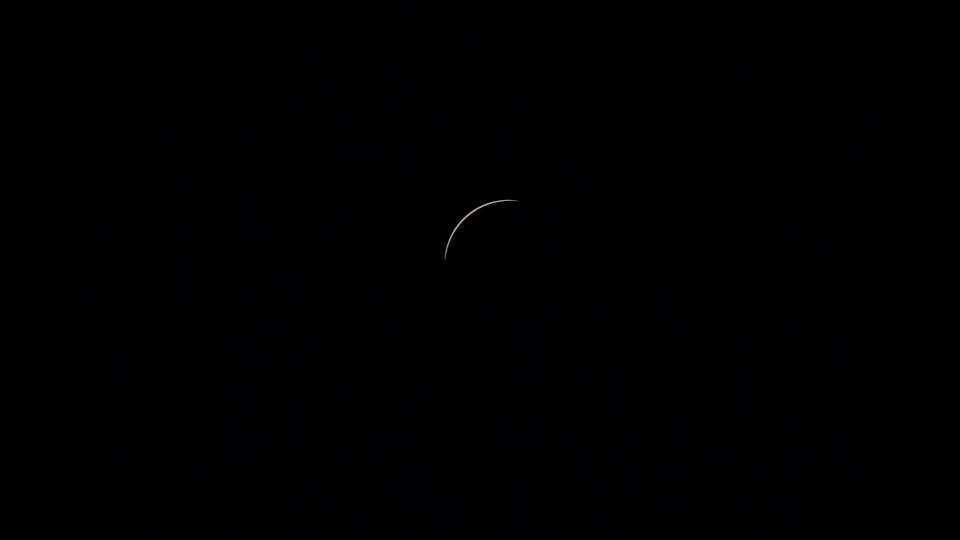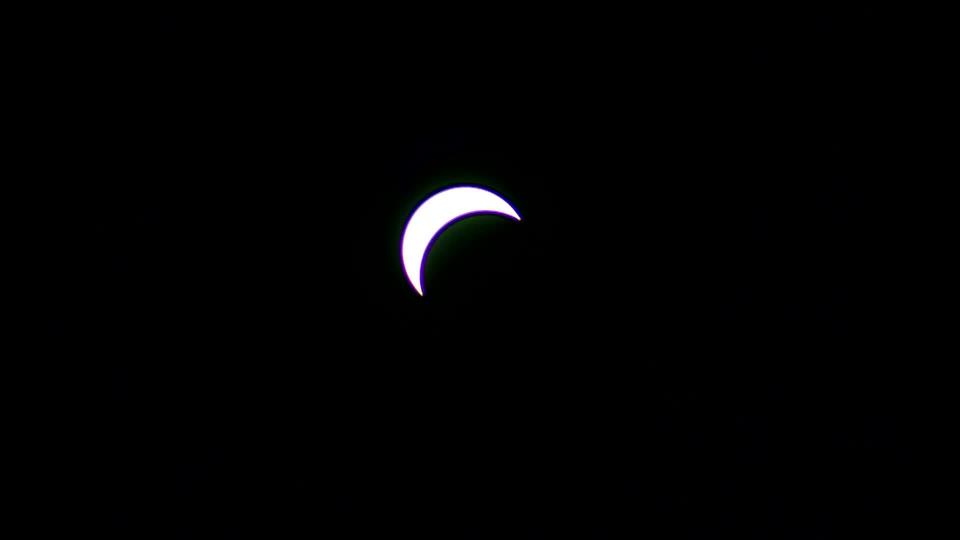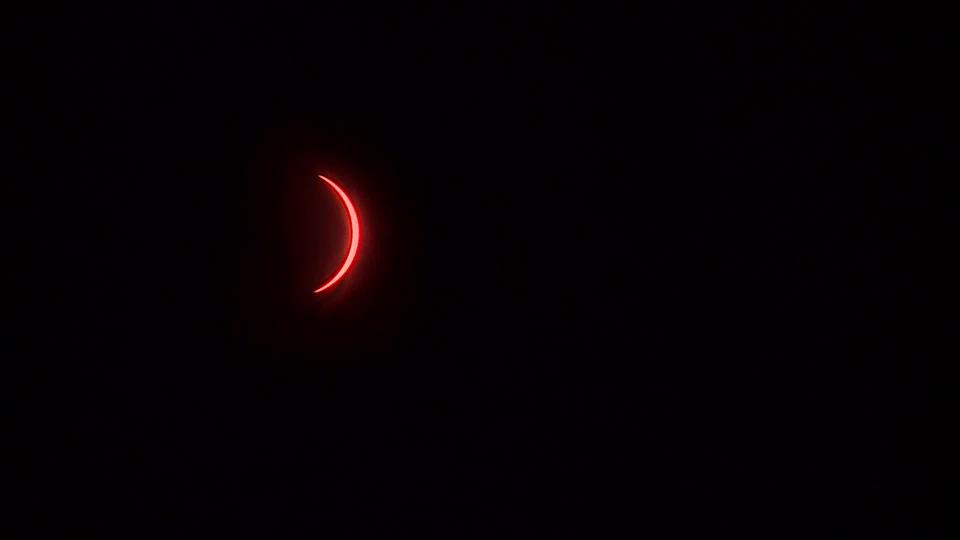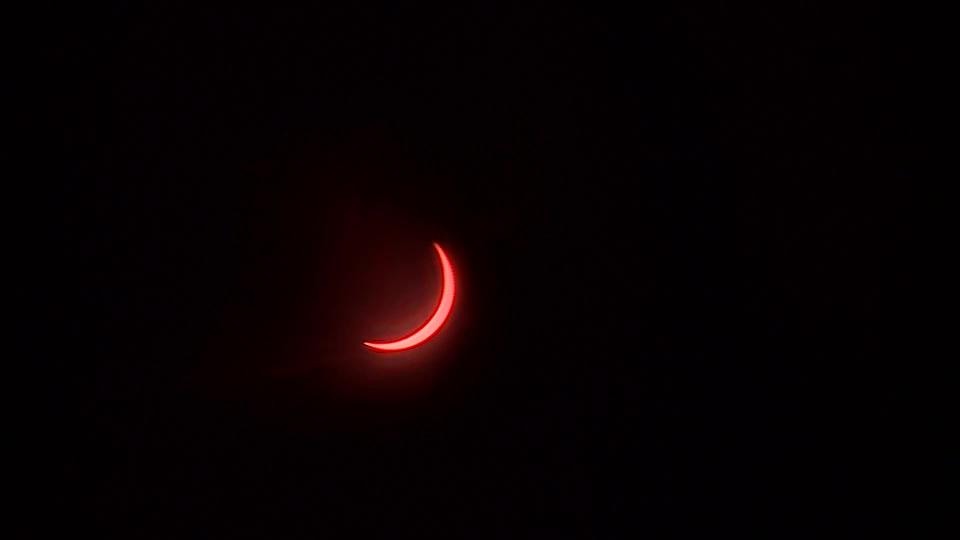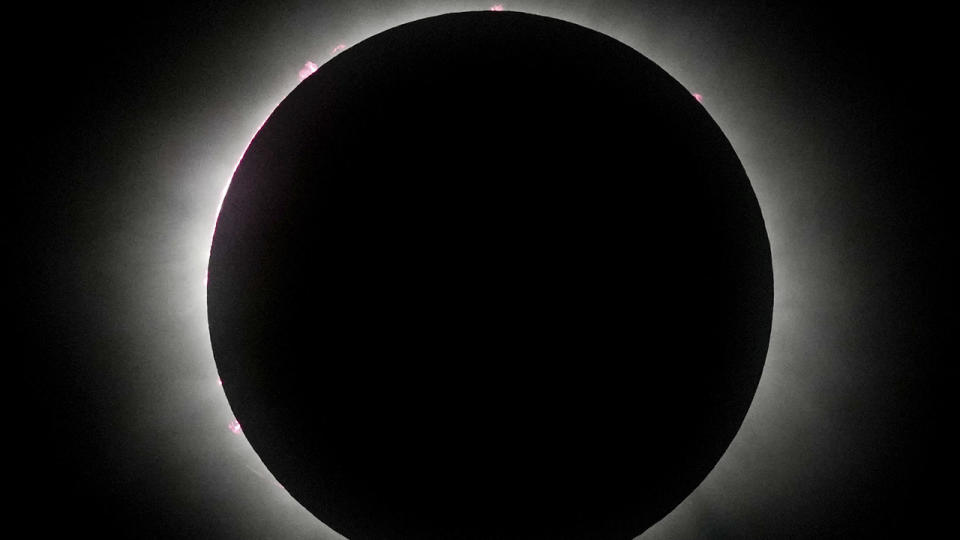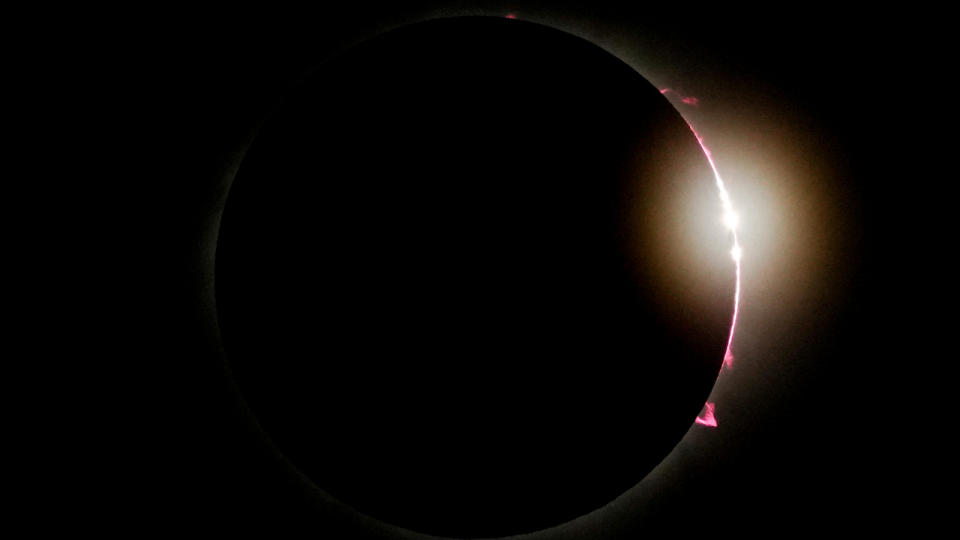In West Michigan and around US, eyes on solar eclipse
GRAND RAPIDS, Mich. (WOOD) — It was a spectacle in the sky: A total solar eclipse made its way over the United States Monday, appearing as a partial eclipse over West Michigan.
The eclipse was caused by the moon traveling in front of the sun, clipping the sun into a crescent and then, at totality, covering it completely for a few minutes. The corona could then be seen shining around the sun in a sort of halo.
“Basically all you see is the corona, a little bit of sun shining around that moon, and then it’s pitch black out here. It looks like a star in the sky,” Storm Team 8 meteorologist Sara Flynn, viewing the total eclipse from Arkansas, described. “There are some stars and some planets in the sky. It is just amazing to see.”
“This is the four minutes in your life when you will see Venus next to the sun,” Storm Team 8 Chief Meteorologist Emeritus Bill Steffen said.
Watch live: Total solar eclipse moves across the US
The path of totality tracked over Texas, Arkansas, Missouri, Illinois, Indiana, Ohio, New York state, Vermont, New Hampshire and Maine, also dipping into the corners of a few other states.
TOTALITY IN ARKANSAS
Bill and Sara traveled to Perryville, Arkansas, with a group from Grand Rapids. Perryville, about an hour northwest of Little Rock, is home to about 1,400 people. The West Michigan group gathered with some of the locals on an athletic field to look up and view the astronomical event.
Blog: Storm Team 8 travels to solar eclipse path of totality
People cheered and clapped as the eclipse reached totality in Perryville. It was night for about four and a half minutes: Stars and planets were visible around the covered sun.
“It is dark,” Sara described, appearing on the WOOD TV8 Live Desk. “I’m sure our (camera) shot looks so much different than it even did 20 minutes ago. That’s how much darker it is right now out here. So much cooler, too.”
“You can see the corona all the way around the sun. Isn’t this amazing? Isn’t this just absolutely incredible?” Bill said. “There is a little red spot just on the bottom side of the sun. That’s a solar prominence.”
Totality: The April 8, 2024, total solar eclipse
Grand Rapids Public Museum Emeritus Planetarium Director Dave DeBruyn, who led the Grand Rapids group of about 50, said planning was quite the undertaking, with lots of concern about where the weather would cooperate. In the end, the weather was perfect.
The most unreal experience 🤩 pic.twitter.com/BWoS17bYBL
— Sara Flynn (@SaraFlynnWX) April 8, 2024
Mike and Stacy Falk of Rockford were with the Grand Rapids group in Perryville and were happy to have seen the view. It was their first total eclipse view.
“The 12-hour drive was totally worth it. The forecast ended up being perfect down here. We got to see the four minutes of totality,” Mike Falk said. “We had a great time.”
“It was pretty amazing. I wasn’t sure what to expect. I had head it gets dark, and it did, but it was kind of twilight all around, 360 degrees around. So something we’ve never seen before,” Stacy Falk said.
They’re already planning a trip to Europe to see another eclipse.
PARTIAL ECLIPSE OVER WEST MICHIGAN
Grand Rapids saw a partial eclipse, with about 94% of the sun blocked by the sun around 3:11 p.m. Kalamazoo had about 96% coverage. As the partial eclipse reached its peak, it got dimmer outside.
The weather cooperated a good view: It was warm and mostly sunny by the time of the peak partial eclipse. Decked out with eclipse glasses, WOOD TV8 staff members stepped outside to get a view and were enraptured.
“(The sun is) just a tiny little sliver,” meteorologist Blake Harms described as he looked up. “Almost the entire sun is covered, just a tiny sliver on the right side of the sun.”
The Grand Rapids Public Museum held an eclipse party downtown and there were several other events around the region.
The seconds before a total solar eclipse over Perryville, Arkansas, on April 8, 024. A solar eclipse ahead of totality in Perryville, Arkansas. (April 8, 2024) A partial solar eclipse over Kalamazoo on April 8,. 2024. A partial solar eclipse over Kalamazoo on April 8,. 2024. The moon covers the sun during a total solar eclipse in Mazatlan, Mexico, Monday, April 8, 2024. (AP Photo/Fernando Llano) The moon partially covers the sun during a total solar eclipse in Mazatlan, Mexico, Monday, April 8, 2024. (AP Photo/Fernando Llano)
The eclipse provided a good science lesson for West Michigan students. At the West Michigan Academy of Environmental Science in Walker and Pine Ridge Elementary in Forest Hills, teachers ushered students outside to observe the event.
“We’ve learned about the different types of eclipses. We’ve talked about eclipse safety and the the frequency, how often they come around. Everybody is really pumped to share this moment together,” a first grade Academy of Environmental Science teacher told News 8.
One Pine Ridge student told News 8 it looked like “the moon is eating the sun.”
West Michigan children watch as ‘moon eats sun’
“All morning this morning, we were really studying the sun, the moon and the Earth, and talking about the eclipse,” Pine Ridge Principal Nathan Peltz said. “All day today, they’ve just been so excited.”
He said school staff hit the safety message hard, repeatedly reminding kids not to look directly at the sun without eclipse glasses.
You shouldn’t look directly at an eclipse or partial eclipse with the naked eye because the brightness of the sun can damage your eyes. Eclipse glasses are about 1,000 times stronger than regular sunglasses, so they protect the eyes.
Solar eclipse: What to do with your glasses after it passes
Police reminded people to use common sense when viewing the partial eclipse over Michigan. telling them not to park along the side of the highway to view it, wear eclipse glasses while driving — you only need them when looking directly at the eclipse — and or take photos while you’re driving.
“We don’t want anybody backing up traffic, going on the shoulder. The shoulders are for an emergency purpose only. It is not for motorists to stop and view the eclipse this afternoon,” Michigan State Police Lt. Michelle Robinson said.
The next total solar eclipse over the U.S. is in 2044 over Montana, North Dakota and South Dakota.
For the latest news, weather, sports, and streaming video, head to WOODTV.com.
